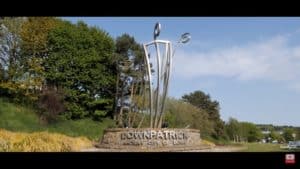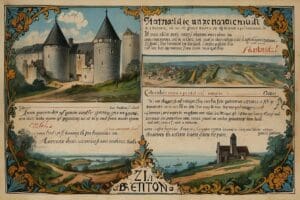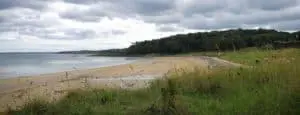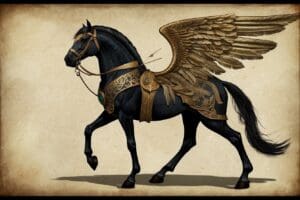Irish Sea Legends: Exploring Merrows, Selkies, and Enduring Maritime Myths
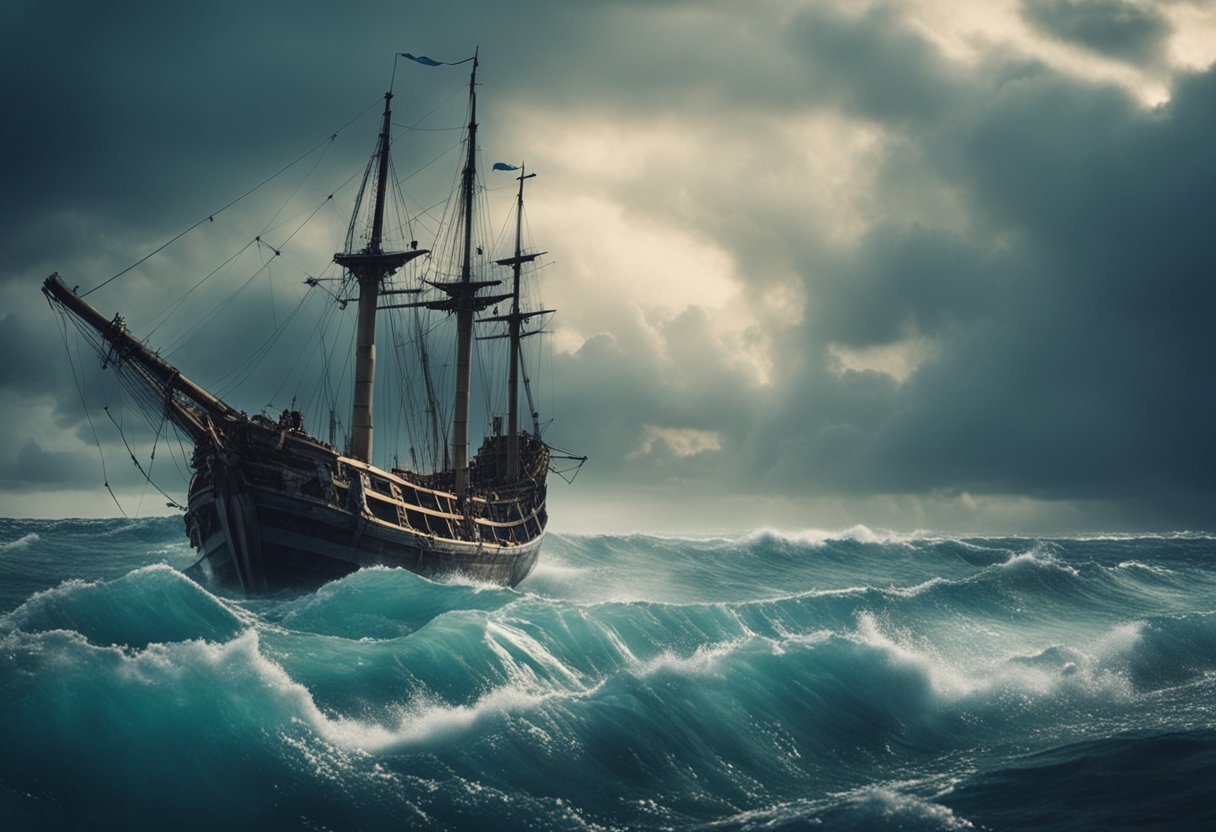
Updated On: April 22, 2024 by Maha Yassin
Weaving through the fabric of Irish sea legends that have stood the test of time, captivating the imaginations of those who hear them. Among the most enchanting of these are the tales of the merrows and the selkies, mythical creatures synonymous with the Irish sea. Merrows, akin to mermaids, are said to be sea maidens with a mesmerising presence, while selkies, creatures of duality, live as seals in the water but shed their skins to become human on land.
These maritime myths charm us with their narratives of otherworldly beings and dramatic love stories and give us insight into Ireland’s legacy of oral storytelling. The merrows and selkies have been a part of Irish folklore for centuries, evolving from simple sea tales into complex metaphors for human experiences and natural phenomena. As vital threads in the tapestry of Gaelic and Celtic traditions, they reflect the inherent connection between the Irish people and the sea surrounding their island nation.
The Lure of the Irish Sea Legends and Its Myths
The waters surrounding Ireland possess an allure steeped in rich maritime myths that captivate our imaginations. Within these tales, the Irish Sea is not just a body of water but a realm of magic where various mythical creatures reside, each with lore and legend.
Merrows, the Irish equivalents of mermaids and mermen, are considered mystical sea beings, intertwining human and fish characteristics. According to Irish folklore, these creatures are denizens of Tír fo Thuinn, the land beneath the waves. Retelling their stories whispers of beauty and mystery, echoing the essence of Ireland’s maritime narrative.
Selkies, another maritime legend, are seals in the sea but become humans on land by shedding their skin. With tales shared across Irish and Scottish folklore, Selkies add a layer of poignant romance and tragedy to our coastal yarns, reminding us of the sea’s unpredictable nature.
Our sagas often feature Manannán mac Lir, a sea deity guarding the afterlife, similar to Poseidon in Greek mythology, firmly securing him within our legendary pantheon. These narratives reflect an intrinsic connection between the Irish people and the turbulent waters surrounding us.
Viewing these stories through the lens of our Celtic heritage, we find ourselves part of a lineage where the sea is both a life-giver and a mysterious otherworld, home to magnificent tales passed down through generations. As we recount the legends of the Merrows and Selkies, we are reminded of the sea’s perennial presence in our history, culture, and collective heart.
Merrows: The Irish Mermaids
In Ireland’s coastal folklore, merrows are the sea’s answer to enchantment and beauty, combining human and fish forms in their legend.
Merrow Mythology
Merrows, or murúch as they are known in Celtic mythology, are unique to Ireland’s maritime tales. These beings are described as mermaids with a duality, part fish and part human, primarily focusing on the women of their kind who exemplify an ethereal beauty. It is believed that merrows have a magical cap known as cohuleen druith, which allows them to dive into the ocean’s depths and return to land.
Merrows are deeply sewn into Irish folklore, representing the sea’s benevolent and ominous nature. They’re often depicted as gentle souls with a penchant for falling in love with mortals, yet they’re equally associated with foreboding omens.
Merrow Sightings
Though accounts of merrow sightings are rare, they resonate with the mystique of the coastal regions of Ireland. Fishermen and coastal dwellers have passed down tales of encountering these wondrous creatures for generations, often describing their interactions or fleeting glimpses of their aquatic neighbours.
These stories serve as entertainment and cultural vessels, carrying the essence of Ireland’s relationship with the sea. The merrows in these narratives are not merely figments of imagination; they are woven into the fabric of Irish identity, representing a link to a world that underscores respect for nature and the allure of the unexplained.
Selkies: Seals or Humans?
Selkies occupy a fascinating place in Irish maritime folklore, living dual lives as seals in the sea and humans on land. These mystical beings are said to shapeshift by shedding their sealskin, revealing their human form beneath.
Selkie Legends
Selkie legends describe these creatures as possessing an irresistible allure, often leading to romantic encounters with humans. Stories tell of seals that transform into beautiful people, engaging in love affairs with enchanting and tragic consequences. Male selkies are noted for their seductive power over human women. In contrast, female selkies are often depicted as being captured by human men who hide their magical sealskins to prevent them from returning to the sea.
Gender and Transformation
The transformative nature of selkies is deeply intertwined with gender. Male selkies shift shape and blend into human society easily, while female selkies often find their fate controlled by those possessing their sealskin. The selkie’s ability to change form carries a potent symbolism, questioning themes of identity and freedom. Whether in seal form or human, the dual nature of selkies reflects a fluid boundary between wild nature and the human world, hinting at deeper connections beyond mere physical forms.
Folklore in Daily Life
In Irish culture, folklore isn’t just a relic of the past; it’s a living tradition that informs our understanding of relationships, marriage, and the deep connection between land and sea. We find these themes especially present in our songs and music, echoing old tales.
Tales of Love and Longing
In the Celtic tradition, stories of selkies and merrows intertwine with our everyday life, often speaking of love and longing. The Selkie myths, invigorating our folklore, tell of sea-dwelling creatures who can shed their seal skins to become human. Romantic tales of these beings often involve themes of love lost or unrequited, as selkies are known to return to the sea, leaving behind heartache on land. We see these narratives reflected in our music, with lyrics capturing the essence of these tales and creating a bridge between myth and emotion.
Cultural Significance
Our folklore is deeply rooted in the Irish and Celtic identities, and songs permeate our daily life, reinforcing the link between us and the natural world. The stories of the Merrow, akin to the mermaid of maritime lore, reflect a connection to nature that’s uniquely Irish. They are said to be capable of forming relationships with humans, revealing a complex tapestry of interactions between the sea and the land, which extends to concepts of marriage between our world and the mystical one. It isn’t unusual to find in a traditional Irish wedding a ballad that hearkens back to these oceanic legends, celebrating both love and our cultural heritage.
Mythical Beings and Their Meanings
In this section, we unravel the tapestry of Celtic folklore, which is rich in mythical beings, each endowed with its symbolism and themes that reflect the values and beliefs of the Celtic people.
Celtic Creatures
Merrows: These sea maidens are part-human, part-fish entities of Irish legend, akin to the mermaids and mermen of broader mythology. Merrows embody the duality of nature – beauty juxtaposed with danger, much like the sea itself.
Selkies: Shape-shifting beings. Selkies are said to inhabit the oceans around Ireland and Scotland. They transform from seals into humans, symbolising themes of transformation, freedom, and the fluid boundary between the natural and supernatural worlds.
Leprechauns: These solitary creatures of Irish folklore are often associated with wealth and trickery. The pursuit of a leprechaun’s pot of gold represents the human quest for fortune and the folly of greed.
Sirens: Sirens are often conflated with merrows but originate from Greek mythology. Their irresistible songs lead to many a sailor’s demise, serving as a metaphor for temptation and the destructive power of nature.
Symbolism and Themes
Celtic myths are replete with symbolism that transcends time. These creatures often symbolise natural elements and the Gaelic respect for the environment. For instance, the selkie’s transformation from seal to human can represent nature’s cyclical and transformative qualities.
Themes of identity and culture are at the heart of these myths. The leprechauns’ hidden gold and elusive nature signify the richness of the Irish identity – something sought after but difficult to grasp or own fully. The merrow’s enchantment and subsequent integration into human society explore the merging of different worlds and the survival of cultural identities.
Notions of magic and the fairy realm reflect Celtic spiritual beliefs and the ancient understanding of the interconnectedness of all life. Fairies and other magical beings are often seen as intermediaries between the mortal world and the divine, guiding humans through life’s trials with their wisdom and supernatural powers.
Celtic mythology remains a fundamental part of our cultural heritage, providing us with a window into the values and beliefs of our ancestors. It encourages us to ponder the sometimes unseen forces that shape our existence and the natural world that surrounds us.
The Influence of Gaelic and Celtic Traditions

In the tapestry of Irish sea legends, the warp and weft of Gaelic and Celtic traditions are interwoven, adding depth and detail to the mythology of the Isles.
Linguistic Roots
The Gaelic language is a cornerstone, giving names to creatures like the Merrow and Selkie that populate Irish and Scottish coastal tales. From the Gaelic word muir meaning ‘sea’ and oigh meaning ‘maid,’ the term Merrow originates, conveying the myth of sea maidens straight from Irish folklore. Similarly, Selkie tales, shared between Ireland and Scotland, derive from the word selch, denoting ‘seal’ in the old languages of these lands.
Narrative Influence
Celtic folklore has infused narratives with motifs and archetypes reverberating through stories, art, literature, and music. An example is the Selkie—seal people known to shed their skins and take on human form—a myth that has significantly influenced literary and artistic works across Ireland and Scotland, both thematically and symbolically. This cross-pollination of culture is evident, too, in the ballads and folk songs that echo the yearnings and tragedies of these shape-shifting beings.
Ocean Myths Across Cultures
Mythologies from various cultures weave tales of enchanted beings in our oceans, reflecting common themes of love and transformation.
Comparative Mythology
In examining oceanic legends, we observe frequent motifs of metamorphosis and romantic entanglements. The Irish Merrow, akin to mermaids, are mythical creatures of dual realms, part-human, part-fish, captivating sailors with their beauty. Their Scottish counterparts are known as the morrough. These entities are said to wear a magical cap, the cohuleen druith, which grants them passage between the deep sea and land.
Selkies, from Orkney and Shetland folklore, are another example. These seal creatures, believed to shed their skins and become humans, have inspired countless stories, particularly those tinged with tragic love. Selkies are often trapped in human marriages, their ocean-bound nature clashing with their terrestrial bonds. Scandinavian mythology also offers parallels with its shapeshifting spirits of the sea.
While uniquely evolving within their own cultures, these stories exhibit universal themes of longing, independence, and the fluidity of nature—themes that resonate with human emotions across the globe.
Intercultural Stories
The narratives often reveal a profound connection between the sea and emotion. The ocean is depicted as a realm of mystery and affection from the Orkney Isles to the rugged Irish coastlines. It is home to beings like the Merrow and Selkies, who form deep bonds with humans yet remain inexorably linked to their watery domain.
These shared themes across cultures not only reflect mankind’s innate fascination with the sea but also speak to the remarkable synergies found in human storytelling. The stories serve as a bridge, joining disparate cultures through a mutual exploration of love, freedom, and identity within the context of the boundless oceans that surround us.
Legends like these have traversed through time, continuously captivating our imagination and offering insight into the values and fears of our ancestors. Their endurance underscores the power of the ocean as a source of inspiration across different cultural landscapes.
Maritime Tales of Love and Loss
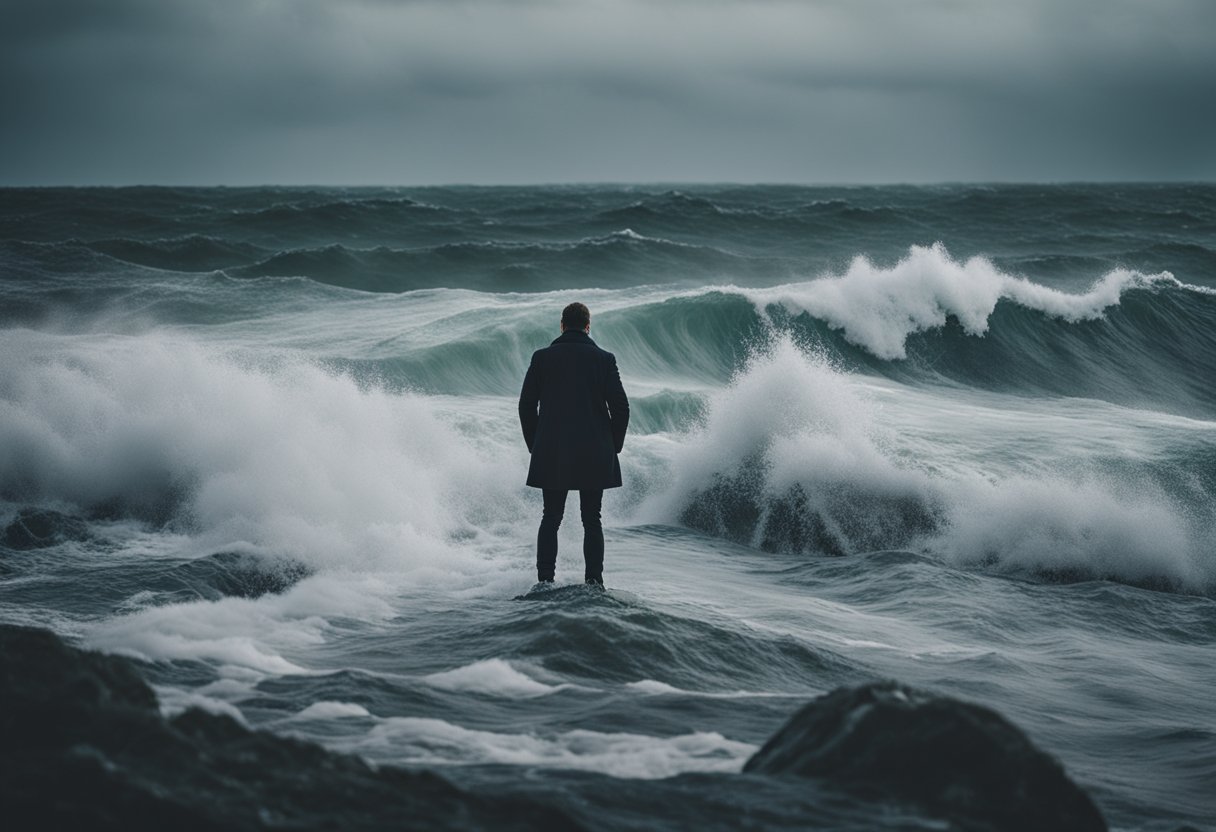
Stories of romantic entanglements and tragic separations feature prominently in the rich tapestry of Irish sea legends. These narratives often intertwine human emotion with supernatural elements, creating poignant tales of love and sorrow.
Romantic Narratives
Selkies, mythical seal creatures known for shedding their skin to become human, often take centre stage in Irish folklore. Their stories are steeped in the magic of romance and longing. A Selkie wife is a recurring character; gentle and enchanting, she inadvertently captures the heart of a human lover. It’s said that if a man finds a Selkie’s skin and hides it, the Selkie is compelled to become his wife. The union, born from enchantment, is marked by a love as deep as the ocean.
However, this love is often laced with loss. The Selkie, whose essence is inherently free, might spend years with her human family, but her heart remains tied to the sea. Longing for her true home, it’s said that if she finds her hidden skin, the Selkie would immediately return to the ocean, leaving her human lover in despair. Such storied relationships invite us to ponder the delicate balance of love between two worlds.
Tales of Danger and Woe
Not all maritime myths carry a tender narrative; some are filled with danger and woe. The act of seven tears shed into the sea is believed to summon a Selkie, but this can lead to perilous outcomes. Against the roaring ocean’s backdrop, lovers may face more than just the gentle mysteries of the heart.
In many Irish myths, the ocean is a powerful force that gives and take away. It’s not uncommon for these tales to take a dark turn, as humans entangled with beings of the sea sometimes find that their imagination brings forth unintended consequences. They may encounter unforeseen dangers as they navigate their relationships with these magical creatures, from stormy weather to mysterious disappearances.
Our collective storytelling continues to draw from the well of these maritime myths as they capture our imagination and resonate with our innate feelings of love, danger, and the sometimes painful beauty of loss.
Selkies and Merrows in Modern Media
Selkies and merrows maintain a vibrant presence in modern media, captivating audiences through their rich portrayal in literature and film and their influence in popular culture and adaptations.
Literature and Film
Literature: The mystical allure of selkies and merrows has inspired numerous literary works. For instance, “A Stranger Came Ashore” by Mollie Hunter weaves a selkie tale into a gripping novel for young readers. In this narrative, a selkie myth becomes intertwined with the lives of the island inhabitants, crafting an engrossing blend of Scottish folklore and captivating storytelling.
Film: The cinematic landscape has also embraced these enchanting sea creatures. “The Secret of Roan Inish,” directed by John Sayles, delicately explores the selkie legends against the backdrop of the Irish coast. Similarly, the film “Ondine,” starring Colin Farrell, offers a contemporary take on the selkie myth, set in modern Ireland and explores the relationship between a fisherman and a mystical woman.
Popular Culture and Adaptations
Irish Jewelry: In popular culture, the themes of selkies and merrows have been artistically represented in various forms, including exquisite pieces of Irish jewellery. Necklaces and rings often feature designs inspired by these sea legends, serving as a tangible connection to the folklore.
Modern Culture: Adaptations of selkie and mermaid mythology continue to resonate with contemporary audiences. From graphic novels to stage productions, these tales are refashioned and reinterpreted for new generations, ensuring that the enchanting narratives of Ireland’s maritime myths remain a steadfast part of our cultural fabric.
The Hidden Messages in Maritime Myths
In our exploration of Irish sea legends, we find they are replete with hidden messages and lessons. These stories, while enchanting, often serve a didactic purpose, imparting morals and practical wisdom through the veil of the mythical.
Merrows, Irish sea maidens, traditionally symbolise the allure of the unknown and the gentle nature of the sea. However, they also warn of the dangers of becoming captivated by such allure, as merrows sometimes experience captivity at the hands of mortals. Their tales subtly teach respecting boundaries and the value of freedom.
Similarly, selkies—seals that can shed their skin to become human—carry a dual message. Their stories frequently revolve around themes of transformation and the inherent duality of land and sea, freedom and captivity. The selkie myth embodies the harsh truths of life’s transitions and the consequences of straddling two worlds.
Through these myths, our ancestors conveyed important lessons: for example, the impermanence of beauty and happiness and the idea that every action, like the waves, has a consequence that ripples back to us.
Each maritime story is a vessel for wisdom. They remind us of our vulnerabilities, our strengths, and, ultimately, our humanity. By sharing these tales, we preserve an important part of our cultural heritage and pass on the enduring morals and stories that have stood the test of time.
Irish Sea Legends: Protecting the Heritage
In our collective efforts to honour our island’s enchanting narratives, we’ve recognised that preserving Irish sea legends, such as those surrounding the merrows and selkies, is paramount. Our heritage, the soul of our maritime culture, breathes life into our stories and sustains the magic for future generations.
Irish Folklore: Integral to our identity, these tales form a vital link to our past. The merrows, with origins rooted in Irish mythology, are sea maidens known for their gentle nature. At the same time, selkies—seals that can shed their skins to become human—are seals of profound transformation and emotional depth.
Preservation: To maintain the vibrancy of these stories, we engage in active conservation practices. By documenting and archiving tales, we ensure their survival against the tides of time.
Heritage and Education: We weave the lore of the sea into our educational curricula, fostering an appreciation in the young, which is essential for the lore’s continuity. Understanding the links between our legends and their locales, like Tír na nÓg, the mythical land of eternal youth also encourages stewardship of our natural seascapes.
Our heritage is more than remembrance; it’s a living tapestry we’re committed to preserving. When we share these tales, we’re not just passing down stories but entrusting our successors with a heritage that has shaped our coastal communities. Through education and preservation, we’re ensuring that the spirit of Irish sea legends continues to ripple through the ages.
Frequently Asked Questions
In this section, we answer some of the most commonly asked questions about the enchanting sea legends of Ireland, focusing on merrows, selkies, and other mythical maritime creatures.
What are the defining characteristics of Merrows in Irish folklore?
Merrows, akin to mermaids, are sea maidens of Irish folklore who possess a magical cap known as a cohuleen druith, allowing them to journey between land and sea. Unlike typical mermaids, however, merrows are considered gentle and modest in demeanour.
How do the myths of Selkies differ from other maritime legends in Irish culture?
Selkies are unique in Irish folklore for their dual existence as seals in the sea and humans on land. These mystical beings differ from other legends in that they are not inherently bound to the sea; instead, they can remove their seal skins and walk on land as humans.
What roles do mythical creatures play in the stories of Ireland’s coastal communities?
Mythical creatures in Irish coastal lore serve as vital links between the community and the mysterious sea, often embodying the unpredictable nature of the ocean or acting as omens. They play roles from protectors to omens, deeply rooted in the maritime heritage and the community’s collective identity.
In Irish sea legends, how are mermaids typically depicted?
Mermaids in Irish legends are often portrayed as beautiful, enchanting beings with a human’s upper body and a fish’s tail. They are frequently associated with alluring male sailors into the depths with their captivating songs and beauty.
Can you explain the relationship between Merrows and Selkies within Irish maritime myths?
Merrows and Selkies are said to be shape-shifters in the sea with the ability to assume human form on land. However, their explicit relationship varies from tale to tale, often overlapping in themes of transformation, enchantment, and the sea’s mystique. These beings collectively enrich the tapestry of Irish maritime myths.
What are some common themes in maritime myths from the Irish Sea?
Common themes within Irish Sea myths include transformation, loss, longing, forbidden love, and occasionally tragedy. These themes reflect an intrinsic connection to and respect for the sea’s power, mystery, and biodiversity treasures.


